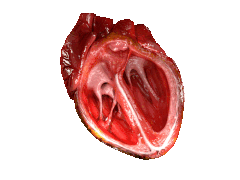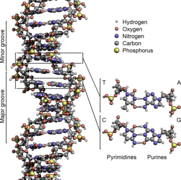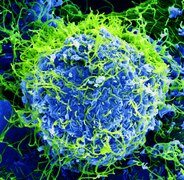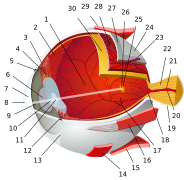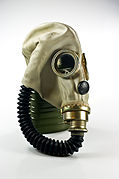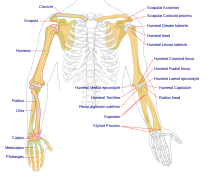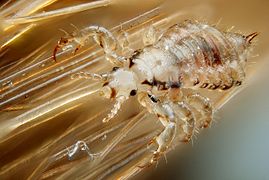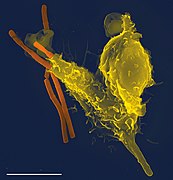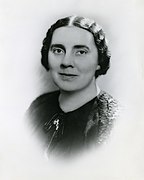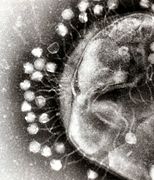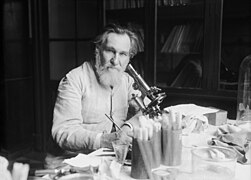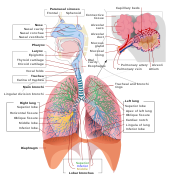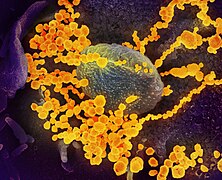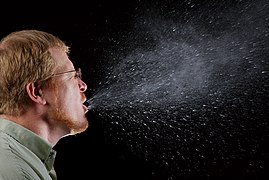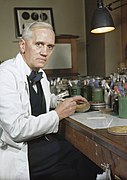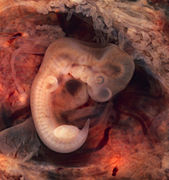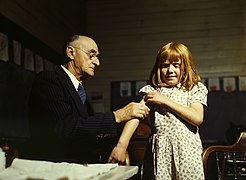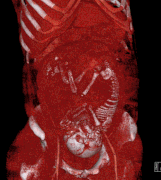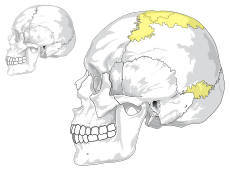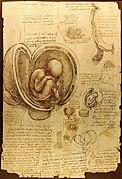Portal:Medicine
The Medicine Portal

Medicine is the science and practice of caring for patients, managing the diagnosis, prognosis, prevention, treatment, palliation of their injury or disease, and promoting their health. Medicine encompasses a variety of health care practices evolved to maintain and restore health by the prevention and treatment of illness. Contemporary medicine applies biomedical sciences, biomedical research, genetics, and medical technology to diagnose, treat, and prevent injury and disease, typically through pharmaceuticals or surgery, but also through therapies as diverse as psychotherapy, external splints and traction, medical devices, biologics, and ionizing radiation, amongst others.
Medicine has been practiced since prehistoric times, and for most of this time it was an art (an area of creativity and skill), frequently having connections to the religious and philosophical beliefs of local culture. For example, a medicine man would apply herbs and say prayers for healing, or an ancient philosopher and physician would apply bloodletting according to the theories of humorism. In recent centuries, since the advent of modern science, most medicine has become a combination of art and science (both basic and applied, under the umbrella of medical science). For example, while stitching technique for sutures is an art learned through practice, knowledge of what happens at the cellular and molecular level in the tissues being stitched arises through science.
Prescientific forms of medicine, now known as traditional medicine or folk medicine, remain commonly used in the absence of scientific medicine and are thus called alternative medicine. Alternative treatments outside of scientific medicine with ethical, safety and efficacy concerns are termed quackery. (Full article...)
Selected image –

Photo credit: Giovanni Maki, derived from a CDC image at [1]
WikiProject

Get involved by joining WikiProject Medicine. We discuss collaborations and all manner of issues on our talk page.
Related portals
Plantar fasciitis or plantar heel pain is a disorder of the plantar fascia, which is the connective tissue that supports the arch of the foot. It results in pain in the heel and bottom of the foot that is usually most severe with the first steps of the day or following a period of rest. Pain is also frequently brought on by bending the foot and toes up towards the shin. The pain typically comes on gradually, and it affects both feet in about one-third of cases.
The cause of plantar fasciitis is not entirely clear. Risk factors include overuse, such as from long periods of standing, an increase in exercise, and obesity. It is also associated with inward rolling of the foot, a tight Achilles tendon, and a sedentary lifestyle. It is unclear if heel spurs have a role in causing plantar fasciitis even though they are commonly present in people who have the condition. Plantar fasciitis is a disorder of the insertion site of the ligament on the bone characterized by micro tears, breakdown of collagen, and scarring. Since inflammation plays either a lesser or no role, a review proposed it be renamed plantar fasciosis. The presentation of the symptoms is generally the basis for diagnosis; with ultrasound sometimes being useful if there is uncertainty. Other conditions with similar symptoms include osteoarthritis, ankylosing spondylitis, heel pad syndrome, and reactive arthritis. (Full article...)
Born in Dublin, Cleary became the country's youngest doctor upon graduating from Trinity College. She later moved to Canada where she served as a public health official in Manitoba before moving to New Brunswick to work there. After her termination, Cleary continued worked as a public health official for other provinces until her death in 2024 from ovarian cancer. She received multiple awards and honours throughout her career, including the Queen Elizabeth II Diamond Jubilee and Platinum Jubilee medals as well as appointments to various institutions such as the University of Manitoba and the University of New Brunswick. (Full article...)

Hermaphrodite is a series of photographs of a young intersex person, who had a male build and stature and may have been assigned female or self-identified as female, taken by the French photographer Nadar (real name Gaspard-Félix Tournachon) in 1860. Possibly commissioned by Armand Trousseau, the nine photographs have been described as "probably the first medical photo-illustrations of a patient with intersex genitalia". They were originally restricted for scientific uses, and Nadar did not publish them. Further photographs of intersex subjects followed over the next several decades, although there is no evidence that the photographers knew of Nadar's work. (Full article...)
Hypertension, also known as high blood pressure, is a long-term medical condition in which the blood pressure in the arteries is persistently elevated. High blood pressure usually does not cause symptoms itself. It is, however, a major risk factor for stroke, coronary artery disease, heart failure, atrial fibrillation, peripheral arterial disease, vision loss, chronic kidney disease, and dementia. Hypertension is a major cause of premature death worldwide.
High blood pressure is classified as primary (essential) hypertension or secondary hypertension. About 90–95% of cases are primary, defined as high blood pressure due to nonspecific lifestyle and genetic factors. Lifestyle factors that increase the risk include excess salt in the diet, excess body weight, smoking, physical inactivity and alcohol use. The remaining 5–10% of cases are categorized as secondary hypertension, defined as high blood pressure due to a clearly identifiable cause, such as chronic kidney disease, narrowing of the kidney arteries, an endocrine disorder, or the use of birth control pills. (Full article...)
Streptococcal pharyngitis, also known as streptococcal sore throat (strep throat), is pharyngitis (an infection of the pharynx, the back of the throat) caused by Streptococcus pyogenes, a gram-positive, group A streptococcus. Common symptoms include fever, sore throat, red tonsils, and enlarged lymph nodes in the front of the neck. A headache and nausea or vomiting may also occur. Some develop a sandpaper-like rash which is known as scarlet fever. Symptoms typically begin one to three days after exposure and last seven to ten days.
Strep throat is spread by respiratory droplets from an infected person, spread by talking, coughing or sneezing, or by touching something that has droplets on it and then touching the mouth, nose, or eyes. It may be spread directly through touching infected sores. It may also be spread by contact with skin infected with group A strep. The diagnosis is made based on the results of a rapid antigen detection test or throat culture. Some people may carry the bacteria without symptoms. (Full article...)

Vitamin E is a group of eight compounds related in molecular structure that includes four tocopherols and four tocotrienols. The tocopherols function as fat-soluble antioxidants which may help protect cell membranes from reactive oxygen species. Vitamin E is classified as an essential nutrient for humans. Various government organizations recommend that adults consume between 3 and 15 mg per day, while a 2016 worldwide review reported a median dietary intake of 6.2 mg per day. Sources rich in vitamin E include seeds, nuts, seed oils, peanut butter, vitamin E–fortified foods, and dietary supplements. Symptomatic vitamin E deficiency is rare, usually caused by an underlying problem with digesting dietary fat rather than from a diet low in vitamin E. Deficiency can cause neurological disorders.
Tocopherols and tocotrienols both occur in α (alpha), β (beta), γ (gamma), and δ (delta) forms, as determined by the number and position of methyl groups on the chromanol ring. All eight of these vitamers feature a chromane double ring, with a hydroxyl group that can donate a hydrogen atom to reduce free radicals, and a hydrophobic side chain that allows for penetration into biological membranes. Both natural and synthetic tocopherols are subject to oxidation, so dietary supplements are esterified, creating tocopheryl acetate for stability purposes. (Full article...)
Did you know –

- Snoezelen or "controlled multisensory stimulation" might be beneficial to people with autism and other developmental disabilities, dementia, and brain injury?
- The therapeutic index of a medication is a comparison of the amount that causes the therapeutic effect to the amount that causes toxic effects. Quantitatively, it is the ratio of the dose required to produce the desired therapeutic effect and the toxic dose. A commonly used measure of therapeutic index is the effective dose of a drug for 50% of the population (ED50) divided by the lethal dose for 50% of the population (LD50).
- ...that a toddler with a syndrome of rash (pictured), arthralgia/arthritis, abdominal pain and renal disease, preceded by a viral upper respiratory tract infection, is likely to have Henoch-Schönlein purpura?
General images –
More Did you know (auto generated)

- ... that Tang Zonghai was one of the first advocates for the integration of Chinese and Western medicine?
- ... that Mary Robertson was the first woman to receive a Doctor of Science degree in medicine from the University of Cape Town?
- ... that Constance Fozzard was told during her surgical training that women with children could not become consultants?
- ... that the Noongar used the Eucalyptus wandoo tree as a medicine and ointment?
- ... that Margaret C. Roberts was encouraged to study medicine by LDS Church leader Brigham Young to reduce mortality rates during childbirth?
- ... that a lack of screening for pregnant women with syphilis in sub-Saharan Africa is associated with increased infant mortality?
Topics
Categories
Recognized content
Associated Wikimedia
The following Wikimedia Foundation sister projects provide more on this subject:
-
Commons
Free media repository -
Wikibooks
Free textbooks and manuals -
Wikidata
Free knowledge base -
Wikinews
Free-content news -
Wikiquote
Collection of quotations -
Wikisource
Free-content library -
Wikiversity
Free learning tools -
Wiktionary
Dictionary and thesaurus











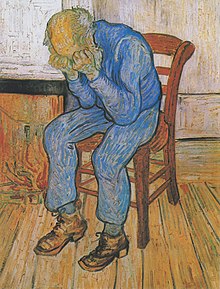

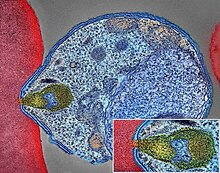
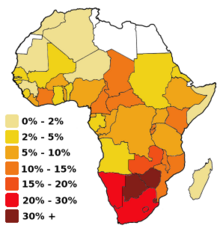
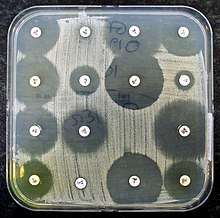
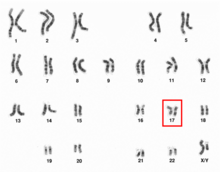

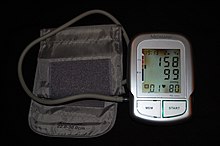
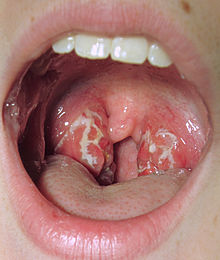

























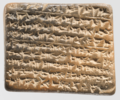







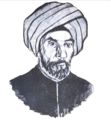










![Image 47Global concentrations of health care resources, as depicted by the number of physicians per 10,000 individuals, by country. Data is sourced from a World Health Statistics 2010, a WHO report.[needs update] (from Health care)](http://upload.wikimedia.org/wikipedia/commons/thumb/1/1f/Global_physician_density_map_-_WHO_2010.png/120px-Global_physician_density_map_-_WHO_2010.png)
























